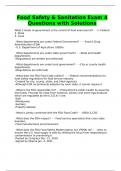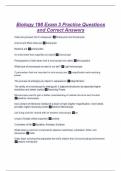Samenvatting
Summary Neuropsychology in the Courtroom Problem 1-5
- Instelling
- Maastricht University (UM)
Summary for course on 'Neuropsychology in the Courtroom' previously called 'Forensic Neuropsychology'. This course is given at Maastricht University for the Legal and Forensic Psychology masters.
[Meer zien]







